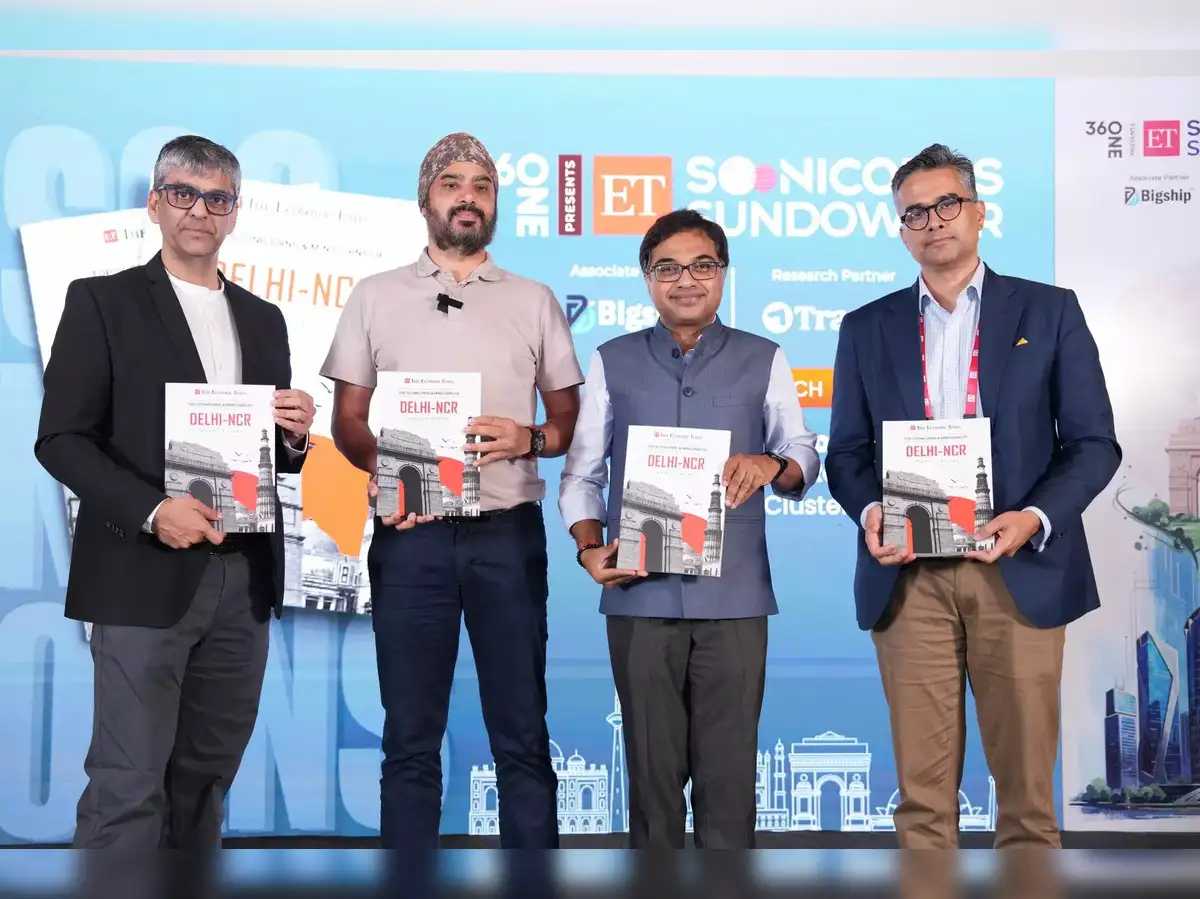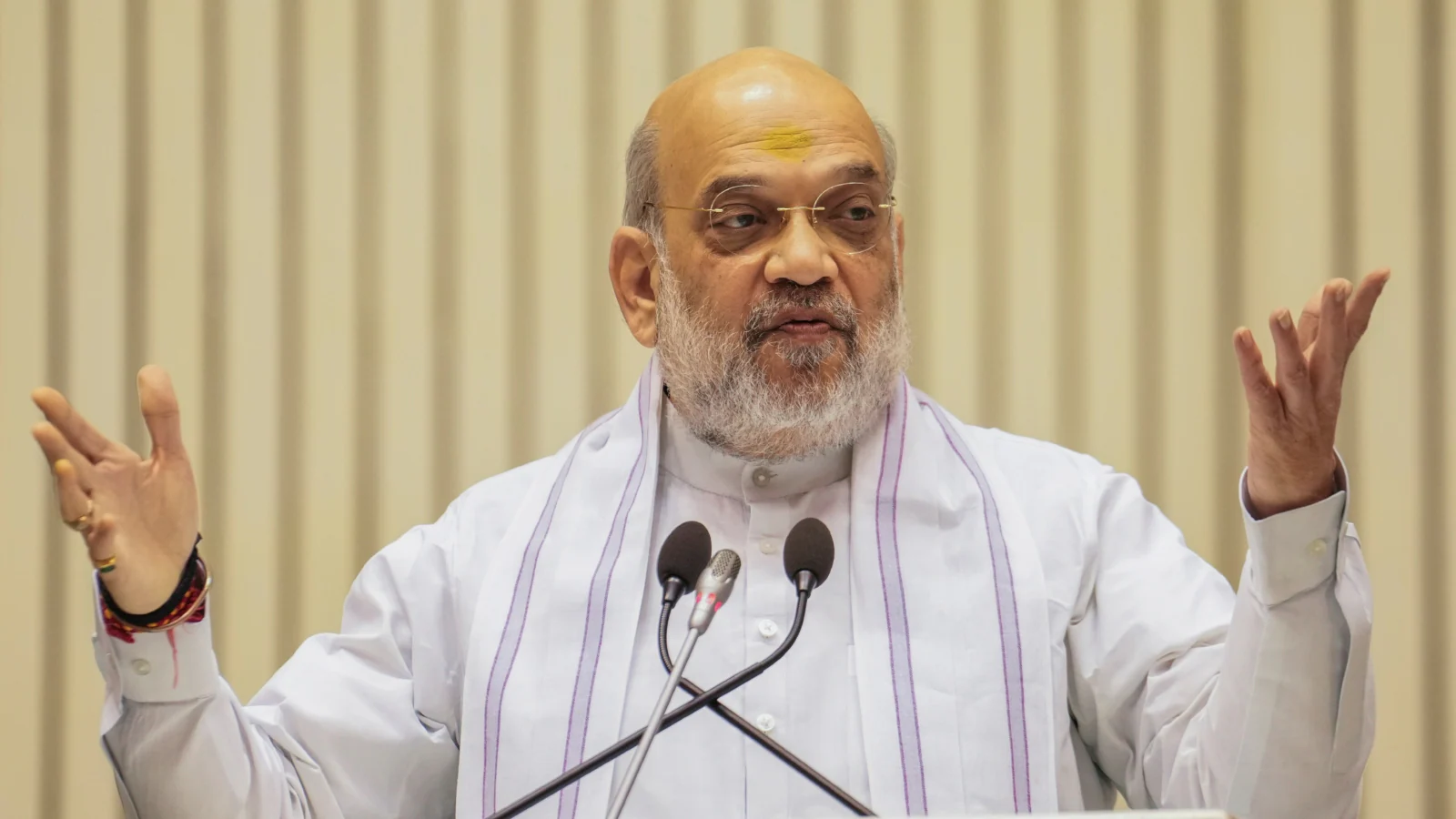Decoding the Delhi-NCR playbook: Volume, value and velocity at the ET Soonicorns Sundowner Gurugram
By Et Special Last Updated
Copyright indiatimes

At the ET Soonicorns Sundowner Gurugram edition—a sharp spin-off from the flagship ET Soonicorns Summit 2025—the spotlight turned to Delhi-NCR, India’s largest entrepreneurial cluster outside Bengaluru. Anchored by the Delhi–Gurugram–Noida triad, the region has become a magnet for founders and investors building across consumer, healthcare, and technology sectors.The panel, titled ‘Decoding the Delhi–Gurugram–Noida Playbook: Volume, Value and Velocity Powering Soonicorns,’ brought together founders and investors who have both built and backed some of its most dynamic ventures. Moderated by Shelley Singh, Consulting Editor, ET.com, the discussion traced the region’s evolution from the outsourcing capital of the 1990s to today’s crucible for consumer brands, enablers, and healthcare ventures. Singh set the tone with an evocative reminder: “Probably Delhi can say the same about Bangalore—that you stole my thunder. But all said and done, at a level, it’s good that all cities grow, and there’s a lot of growth happening all over.”A deep consumption marketFor Ankush Talwar, Co-Founder of GoKwik, the story of NCR’s startup energy begins with roots and reach. He recalled, “We, of course, were born and brought up in Delhi-NCR, Kanpur. Some of the key leadership positions that we’ve been able to fill in our company are also a derivative of the great startup ecosystem that North India had, particularly Delhi-NCR had.” What made the difference, he explained, was the proximity to a large consumer base—vital for early-stage companies testing product-market fit. “When you are building a company in the beginning, you need access to consumers… I feel there is tremendous depth in NCR as a market. Great consumer reception helped enable our brand to grow, making you build the product as you keep building. It’s a deep consumption market.”That sentiment was echoed—and extended—by Shivam Shahi, Co-Founder and COO of Blue Tokai Coffee Roasters, who tied the region’s dynamism to cultural aspiration. In his words, “One thing which is very important in NCR is that people are very aspirational. In NCR, there is no one from NCR. Everyone has come from small villages or towns. So there’s a thirst, there’s an aspiration to achieve more in life.” For Blue Tokai, that aspiration has translated into a fast-scaling workforce—3,000 today, headed towards 10,000 in two to two and a half years. As Shahi put it, being in NCR means finding talent that wants to move from barista to boardroom: “people growing from Barista to, let’s say, wanting an IPO—that can only be achieved once you have empty pockets, which sadly, North Indians from the last two, three decades are running behind compared to the southern part of India.”The investor’s lensAnkur Mittal, Co-Founder, Inflection Point Ventures, brought in the investor’s counterpoint. While he acknowledged the breadth of NCR’s ecosystem, he cautioned that the region is not equally suited for every sector. As he put it, “If you are building an ultra deep tech and for which you need to hire data scientists, probably Delhi NCR is not that place, because that supply may not be available. The talent pool is not there.”Outside of deep tech, however, Mittal painted a different picture. NCR, he argued, offers a micro market for virtually anything—from selling “the masala chai product” to “100 crore apartments.” What underpins this is not just infrastructure but the space to experiment. “For an ecosystem to be successful, you need space… You can go in any direction. And that is why BPO started here.”He emphasised the flywheel of capital and talent. “There is capital. There is exuberance. There is no dearth of motivation. CPOs, BPOs have created corporate Caesars. Those people are now becoming startup founders. So there is a complete ecosystem play that happens in Delhi NCR.”On competitiveness, Mittal was emphatic: “You have to be extremely competitive. I think that is the reason why we may have only 15 unicorns, but those are mega unicorns. Because here, when we achieve success, we don’t stop. We want to go for the next and the next and the next.”And he added a practical caveat: “Delhi might be a tough place to run a startup just because you don’t have a lot of low-income housing. But if the ecosystem is there, life becomes easier.”Consumer and healthcare: Untapped and expansiveThe conversation also shifted to sectoral specifics, with Tarun Sharma, Head of Healthcare and Consumer, 360 ONE Asset, noting that NCR’s strengths are unevenly distributed.On healthcare, he was candid that the region still suffers from some glaring gaps. NCR, he pointed out, “probably has one of the lowest bed densities,” a curious reality given the space and resources available. While other cities first built their multi-specialty capacity and then moved quickly into niches such as eye care, IVF or dialysis, Delhi “has really fallen back” on the single-specialty side.Pharma tells a similar story of underachievement. Sharma observed that among the country’s top ten pharmaceutical companies, only Mankind Pharma is based in Delhi. The larger, export-oriented players known for “cutting-edge manufacturing excellence” never really took root here, even though the region has long had an industrial belt that “has not scaled to its potential.”By contrast, consumer markets reveal NCR’s strengths more clearly — and here Sharma aligned with Talwar and Shahi. With a population of 42 million, average incomes of over four lakh, and half of the base in the 25-40 age bracket, he described it as “a very attractive market… the right age for consuming, aspiring class.” Add to this robust distribution networks and quick-commerce readiness, and the region offers an unusual advantage: “If you want to launch a food brand or get into quick commerce channels, you have the backend in place to really figure out product-market fit fairly early. That’s quite unique.”Where perspectives converged—and divergedThe panel converged on one central truth: Delhi NCR is a consumption-led powerhouse with immense headroom for growth. Talwar’s observation of “tremendous depth in NCR as a market” and Shahi’s description of an “aspirational market” were reinforced by Sharma’s demographic and distribution analysis.Yet divergences were equally sharp. Mittal warned of talent supply gaps in deep tech, while Sharma flagged healthcare and pharma as laggard sectors. In contrast, founders like Talwar and Shahi celebrated NCR’s strengths in scale, talent, ambition, and consumer receptivity.The NCR playbookAs the discussion drew to a close, one insight was unmistakable: NCR’s playbook is not monolithic. It is a composite of volume—the sheer number of ventures; value—the capital, talent, and consumer power at its command; and velocity—the rapidity with which startups test, iterate, and scale.The ET Soonicorns Sundowner Gurugram edition captured this complexity not by flattening the NCR story into triumphalism, but by showing it as an evolving, competitive, and sometimes contradictory ecosystem—one that is writing its own distinctive script in India’s startup economy.360 One is the Presenting Partner of the ET Soonicorns Summit 2025, with BigShip as Associate Partner, Tracxn as Research Partner and Paul John Visitor Centre as Experience Partner.



